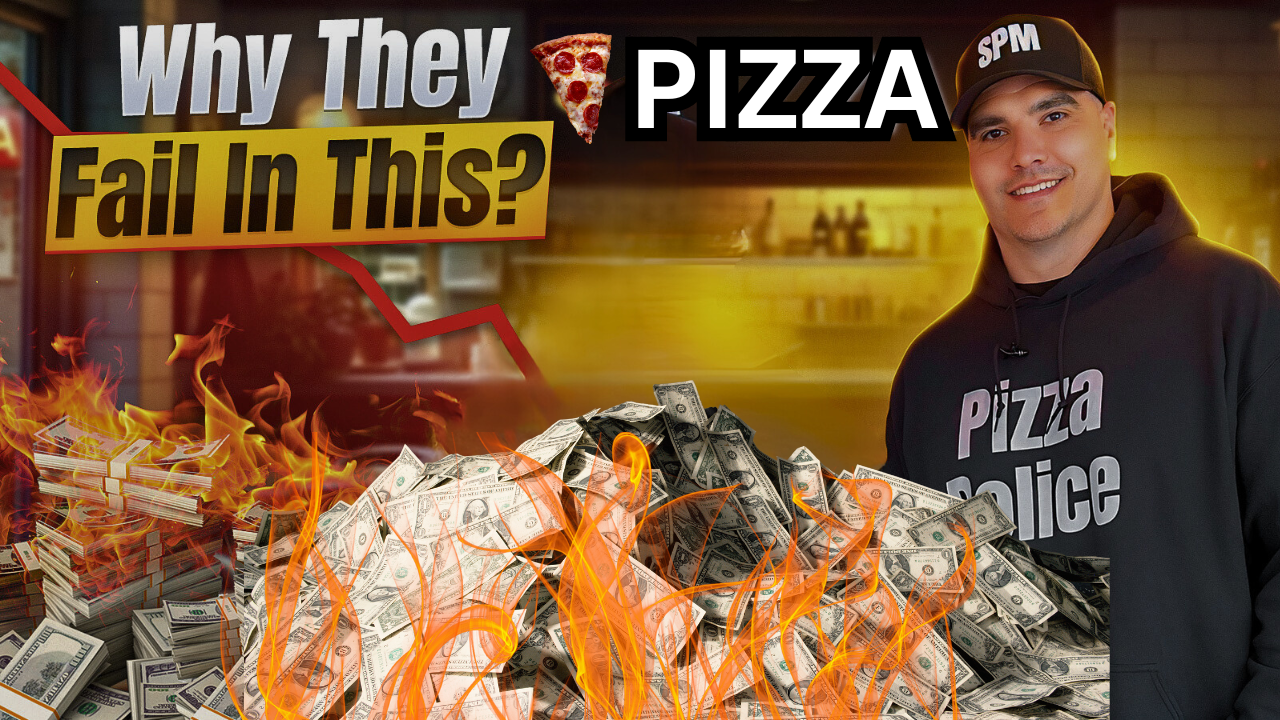Why Do So Many Pizza Shops Struggle?
If you’ve ever driven past a busy pizza shop, you might think to yourself, “These guys must be making a ton of money!” After all, pizza is a popular and seemingly profitable item. But the reality for many pizza shops is quite different. In fact, a significant number of pizzerias struggle to make ends meet, and many eventually fail. But why is that the case?
From my experience interviewing over 500 pizza shop owners, the reason boils down to one main factor: not knowing their financials. In this blog post, I’ll dive into the common pitfalls and offer practical tips on how to ensure your pizzeria not only stays afloat but thrives.
The Importance of Knowing Your Financials
Many people jump into the pizza business without fully understanding the financial aspects. Maybe they started with a pop-up, made pizzas for friends, and thought scaling up would be simple. But running a pizzeria comes with a lot more costs than just ingredients. Rent, labor, paper goods, and taxes all add up. Without a firm grasp on these numbers, even the busiest shop can quickly find itself in financial trouble.
Understanding your numbers is the key to success. If your pizzeria isn’t operating profitably, it doesn’t matter how many pizzas you sell—you won’t make it in the long run.
Key Tool: Profit and Loss (P&L) Statements
A crucial part of knowing your numbers is having a Profit and Loss (P&L) statement. This financial statement provides a snapshot of your business’s financial health over a specific period, be it monthly, quarterly, or annually.
A P&L is broken into two sections:
- Sales and cost of goods: This equals your gross profit.
- Operating expenses: This includes rent, labor, and other overhead costs.
When you subtract your operating expenses from your gross profit, you’re left with your net profit. This is the real measure of success for your business—what’s left after covering all the costs.
Labor, Food, and Rent: Your Three Biggest Costs
In any pizzeria, labor, food, and rent are your largest expenses. Let’s take a closer look at these three key areas:
- Labor Costs
- Aim to keep your labor costs at 30% or under. This can vary based on location, especially with differing minimum wages across the country. However, achieving this target will allow your business to operate more smoothly. When you’re just starting out, it can be difficult to forecast labor needs, but tracking your labor costs week to week and adjusting as necessary will help you get it right.
- Food Costs
- The goal is to keep your food costs between 20-25%. Of course, this will fluctuate depending on the items you sell. Some high-profit items will help offset more expensive ones, so keep an eye on your menu mix. If you can’t hit that sweet spot, consider raising prices or cutting low-margin items from your menu.
- Rent
- Your rent or mortgage should be 10-15% of your total sales. Going higher than that, especially in the 25-35% range, can cripple your business. Start small if you have to—consider sharing a space or opening a pop-up if rent is a concern.
Managing Labor Costs Efficiently
One of the most significant challenges in managing labor is balancing staff schedules with fluctuating demand. Forecasting is crucial here. Use your point-of-sale (POS) system and historical data to project sales, and then build your staffing schedule around that. Always schedule a little more labor than you think you’ll need—it’s much easier to send someone home early than to call them in on their day off.
Another important tip: Make your pizzeria a place where people want to work. The longer you can retain employees, the better off you’ll be. Constantly training new staff and covering for those in training is expensive and time-consuming.
Adjusting Your Menu for Profitability
Pricing your menu items properly is essential. If your food costs are too high, you’ll need to either raise prices or reconsider your offerings. For instance, if a large cheese pizza costs $3.50 to make and you’re selling it for $10, that’s a 35% food cost—well above the ideal 20-25%. In this case, you’d need to raise your price or cut costs somewhere else.
When analyzing your menu, focus on the overall profitability. Some items, like sandwiches or salads, might not be as profitable as pizzas. If they’re dragging your overall food costs up, it might be time to raise prices or cut them from the menu.
The Flexibility of Pizza Delivery and Ghost Kitchens
One advantage pizza shops have over other restaurants is the flexibility of delivery. With delivery as an option, you don’t need to rely as heavily on high-traffic locations. This means you can get creative with your rent and possibly opt for a ghost kitchen setup. In today’s economy, this flexibility can be a game-changer, especially as delivery and online ordering continue to grow.
Final Thoughts
Running a successful pizzeria is about more than just making great pizza. It’s about knowing your financials, managing your key expenses, and staying flexible. If you can nail down labor, food costs, and rent while pricing your menu items correctly, you’re already ahead of the game.
The pizza business is challenging, but by paying attention to the details, you can turn it into a profitable and rewarding venture.
Question of the day: What are your numbers? Share your food cost, labor cost, and rent percentages in the comments below. Let’s make this pizza community a place where we can all learn from each other!

